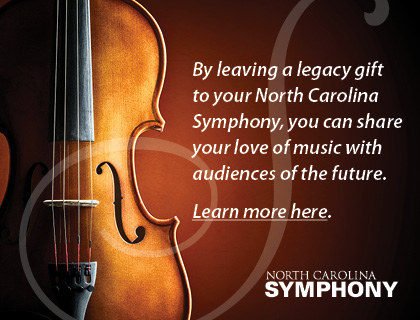Symphony No. 9 in D Minor, Op. 125, "Choral"
Ludwig van Beethoven (1770-1827)
THE STORY
The message of universal brotherhood, peace, and hope in Ludwig Van Beethoven’s final symphony is as relevant today as it was when it premiered in 1824. At that concert in Vienna, Beethoven revealed a work unlike any that had come before it and unmatched by any after it: one that would provide musical ideas and themes for countless composers to come.
Marking Beethoven’s first new symphony and first onstage conducting appearance in twelve years, the concert has become legendary. (Also premiered on the program were Beethoven’s overture The Consecration of the House and three selections from Missa Solemnis.) By that time, Beethoven had gone almost completely deaf, but still, according to an account by one of the violists who performed the premiere, he “flailed about with his hands and feet as if he wanted to play all the instruments and sing all the chorus parts.” Effectively, the performers were conducted by Michael Umlauf, the theater’s kapellmeister, who was also on stage. Beethoven was still conducting when the work ended, having fallen several bars behind. Caroline Unger, the alto soloist, turned him around to receive the applause, which continued for five ovations. Hands, handkerchiefs, and hats were raised in the air to show appreciation for the music Beethoven composed yet could only hear in his imagination.
The creation of the “Choral” Symphony—a hybrid between a symphony and a choral oratorio— had been a long journey. In 1785, Friedrich Schiller published his poem “Ode to Joy,” and Beethoven was immediately drawn to it. He made at least three attempts over the course of decades to set the poem to music before it finally found its home in the finale of the Symphony No. 9 (with some lines cut and reordered, and others added by the composer). Sketches in Beethoven’s notebook show that he tested more than 200 versions of the “Ode to Joy” theme. He similarly toiled over every note in the monumental work, which runs more than an hour in length.
The Ninth Symphony is regarded as Beethoven’s greatest work, one of the greatest achievements in the history of music, and a symbol of unity and optimism. A performance of it famously marked the collapse of the Berlin Wall in 1989, with Leonard Bernstein leading musicians from each side of the wall. In 1998, Seiji Ozawa led the fourth movement of the symphony to close the opening ceremony of the Winter Olympics, with choirs singing simultaneously from Japan, Germany, South Africa, China, the United States, and Australia via satellite. Around the world, the symphony can be heard at the beginning of the new year (including on New York City’s WQXR, where it has topped the countdown of the top 10 requested pieces of classical music every year). A sounding bell of social change and emotional hope, it is perfectly fitting for this inspirational work to be performed at the turning point of a new era.
LISTEN FOR
• The first movement’s introduction, built on perfect fifth intervals in the violins, violas, cellos, and basses, resembling the sound of an orchestra tuning and seeming to represent not only the gradual creation of a musical idea, but earthly creation itself
• Beethoven’s quest for worldly joy in the energized, punchy rhythms of the second movement, Molto vivace
• In the third movement, two themes that take on an increasingly yearning quality and a prominent solo performed by the fourth horn
• The introduction to the finale, recalling themes from each of the preceding movements, and the electrifying moment when the baritone soloist begins the “Ode to Joy,” which brings the vocal soloists, chorus, and orchestra together in an exaltation of the highest hopes for humanity
INSTRUMENTATION
Two flutes, piccolo, two oboes, two clarinets, two bassoons, contrabassoon, four horns, two trumpets, three trombones, timpani, percussion, strings

